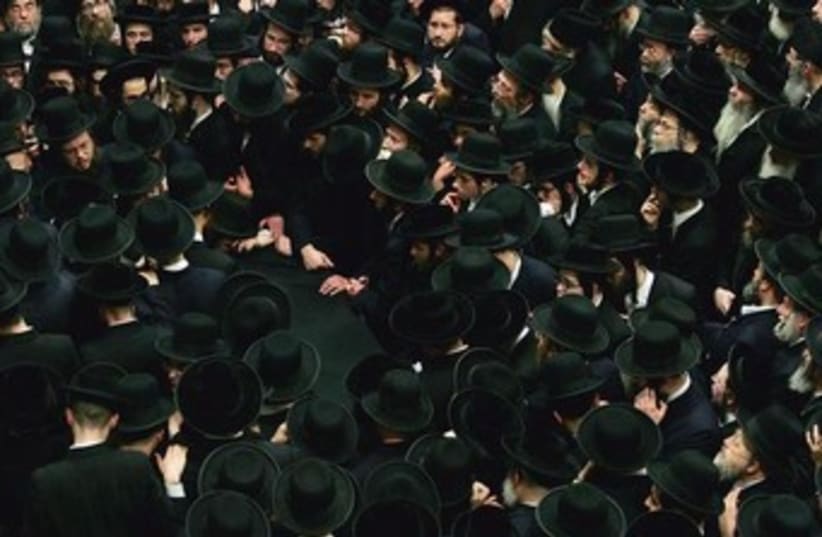Kathryn Hellerstein is planning to write about her family, an unusual array of German and Czech Jews who came to the Midwest in the middle of the 19th century. Until she finds the time to do so, we can listen to her comments when I interviewed her: How far back can you trace your ancestors? In 1840, Samuel Loeb Colman and Ella Strauss left Bavaria because of a law that allowed only one son to marry, in this case, Samuel’s brother; this couple emigrated because they wanted to be married. They traveled for months that winter, arriving in Baltimore and eventually settling in Cleveland, Ohio, near some landsmen.How did they survive? Samuel first worked as a peddler, but eventually opened a store after amassing cash. In the meantime, Ella gave birth to 12 or 13 daughters! Which daughter was your foremother? Leah Colman met her future husband, Edward Rosewater, in the family store. He arrived in the US in 1854 at bar mitzva age.Obviously all the daughters could not inherit the store. How did they survive? As a bachelor, Edward was fascinated by the new and upcoming technology of the telegraph, so found employment setting up telegraph lines, at first locally, but eventually in the South as well. As a matter of fact, when the Civil War broke out, he was working in Confederate territory. The rebels were anxious to have him aid them but he was intent upon finding his way back up north, which he eventually did [see Hebrew University MA thesis by Dafna Strauss about “Rosewater”]. While he did not enlist for active duty during the war, he did serve in the White House war office; it was he who telegraphed Lincoln’s Emancipation Proclamation! At any rate, Rosewater returned to Cleveland to marry Leah [1863/4]; the couple moved to Omaha as the telegraph business expanded. He became a pillar of this community as he was interested in politics, culture and journalism. He founded and edited the Omaha Bee and built up a large personal library. The Rosewaters and their five children belonged to the Reform Temple Israel.
What kind of education did these Midwestern Jews give their children? Nellie, their oldest daughter, attended Omaha H.S. in the 1880s, but because she was an artistic young lady, her parents sent her to Cooper Union School of Art in New York, where she painted and earned her degree. She then returned to Omaha to marry Charles Elgutter, the son of immigrants who was born in California, but whose family moved to Omaha where he attended high school and had Hebrew lessons. Elgutter also went east for his education, and after he graduated Harvard in the late 1880s, earned a law degree, wrote plays and even worked for the Omaha Bee upon his return.What kind of cultural life was available for these educated Jews? Here the story gets a bit complicated, because in 1893 Nellie gave birth to a girl but unfortunately died soon thereafter. Her daughter, who was given her deceased mother’s name, was raised by her grandparents and surrounded by family and the high society of Omaha. They traveled extensively both in the US and in Europe, where she kept a diary recording visits to museums and libraries. This teenage granddaughter loved languages and had an opinion about everything. Her grandfather died in 1906; in 1910 Nellie enrolled as a student at Smith College, majored in Italian and studied German, French and English literature as well.Nellie, the Smithie, was your grandmother, I gather. What did she do after graduating? After graduation, she returned to Omaha to be with her ailing grandmother, who died soon after in 1914. While on summer vacation, she met a Clevelander, Harold (Cohen) Feil, with whom she corresponded and eventually married, moving to Cleveland. Harold was a cardiologist who had attended Western Reserve University; his father, a Yale graduate named George Cohen, died young and his mother had remarried. Nellie retained her love of literature; although she never published them, she wrote fiction and children’s stories. In 1953, she and her husband did publish a revolutionary cookbook, Gourmet Cooking for Cardiac Diets, which encouraged cardiac patients to lead healthy lives rather than assuming that life was over for them.Can you bring us up to your generation to round out this fascinating family history? The couple had three children, George, Mary and Edward. The boys went to Yale as had their grandfather. Mary’s mother, a devoted Smith graduate active in the Smith club, had planned for her to follow in her footsteps which she indeed did. Mary majored in chemistry, and returned to Cleveland after graduating from Smith in 1943. She eventually became a pediatrician, also attending Western Reserve University Medical School and married Herman Hellerstein, a fellow physician (pathologist, cardiologist) in 1947 after he served as a medical officer (1944-45). Of their six children, four followed their parents’ career path, one daughter attended Smith and one, a professor of literature (Kathryn), attended Wellesley. The primary importance of education remained a value of this family for over a century, whether in Bavaria, Omaha or Cleveland.The author is a professor of Jewish history at the Schechter Institute of Jewish Studies and the academic editor of Nashim. Her marriage was officiated by R. Yosef Kapach, and not by his wife Bracha, as was mistakenly printed in her previous column.
